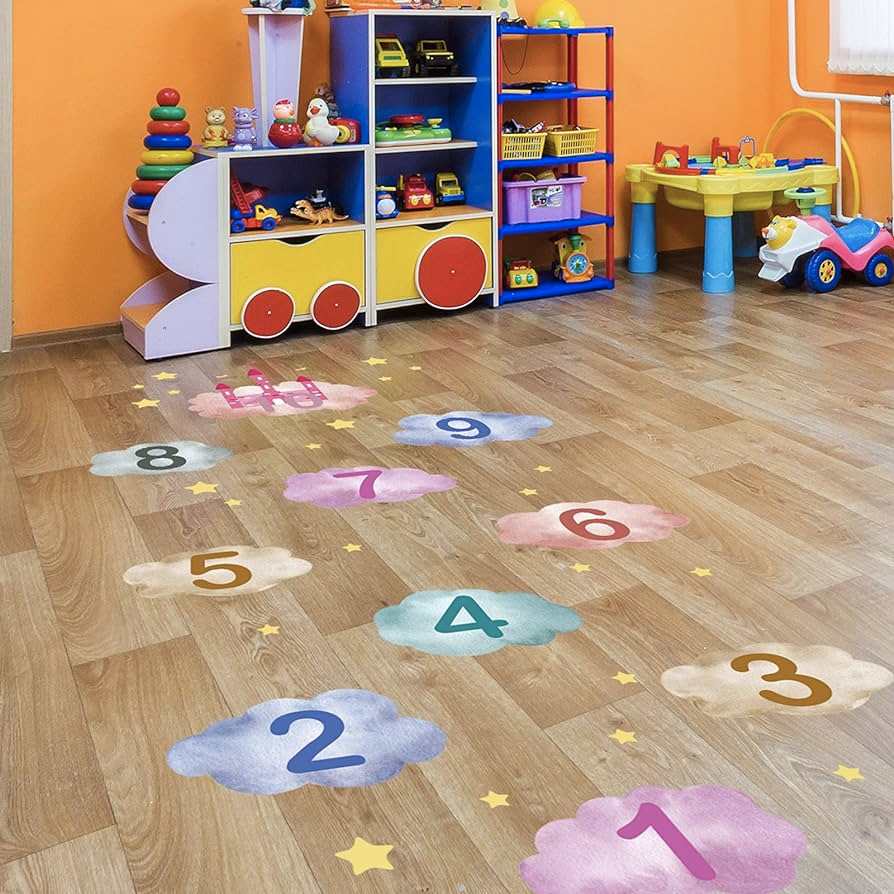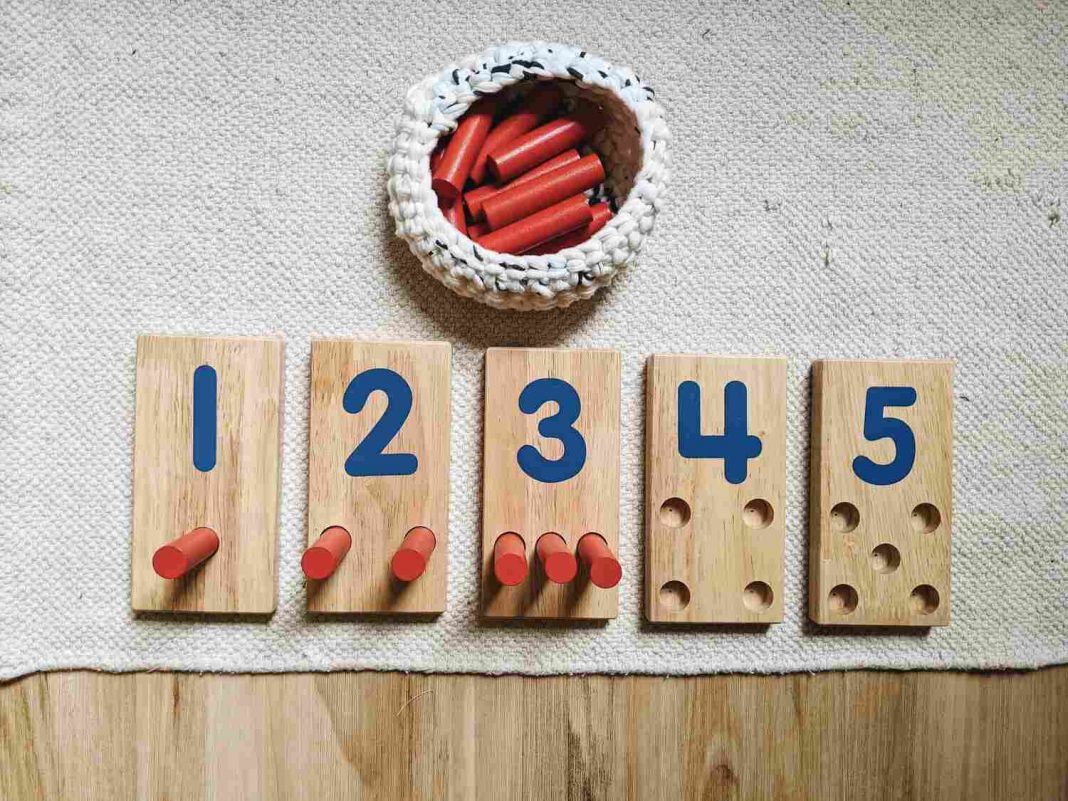Understanding basic math skills is essential for young learners, and one-to-one correspondence is a key concept that lays the foundation for counting and number sense. This blog will explore what one-to-one correspondence is, its benefits, and how you can teach it to children through fun and engaging activities. Let’s dive in!
Math & ELA | PreK To Grade 5
Kids see fun.
You see real learning outcomes.
Watch your kids fall in love with math & reading through our scientifically designed curriculum.
Parents, try for free Teachers, use for free
What is One-on-One Correspondence?
One-on-one correspondence is a basic math concept where each object is matched with one number as you count. For example, if you have five apples, you count each apple once: “one, two, three, four, five.” This helps children understand that numbers represent actual quantities.
How to teach 1 to 1 correspondence in 6 Easy Steps
Step 1: Understanding Basic Counting
This step involves introducing children to the basic concept of counting and number recognition. It’s the foundation for teaching one-to-one correspondence, helping them understand that each number represents a specific quantity.
When to Start: Begin this step when your child shows interest in numbers or around the age of two to three years.
How to Teach:
- Teach the child to recognize and name numbers verbally: Start by showing them numbers and saying their names. Use flashcards or number charts for visual aid.
- Online number recognition games: These quick math games help children recognize and name numbers through fun activities.
Get started with these fun number recognition games:
- Use number songs and rhymes:
Use numbers song games to make learning numbers engaging and memorable. Sing along with your child to make the process enjoyable.
Here are some fun number song games to get started:
After This Step, Your Child Should Be Able To:
- Recognize and name numbers from 1 to 10.
- Recite numbers in the correct sequence.
- Understand that numbers represent quantities, laying the groundwork for teaching one-to-one correspondence.
Step 2: Counting with Physical Objects
This step focuses on using physical objects to teach children how to count accurately. By counting tangible items, children can better grasp the concept of quantity and develop their counting skills.
When to Start: Start this step once your child can recognize and name numbers, typically around the age of three to four years.
How to Teach:
1. Concrete Counting
- Provide a set of objects (e.g., blocks or toys): Use tangible items like blocks, toys, or snacks to make counting more concrete.
- Demonstrate how to count each object one by one: Show your child how to touch or move each object as they count. This physical interaction reinforces the concept of counting one to one correspondence.
Begin with these fun counting objects games:
- Encourage the child to point to each object as they count: This helps them keep track of what they’ve counted and ensures accuracy.
- Emphasize that each object should be counted only once: Make sure they understand that each item gets one count to avoid double-counting.
After This Step Your Child Should Be Able To:
- Count objects accurately by touching or moving each one.
- Understand the importance of counting each object only once.
- Develop a stronger grasp of counting one to one correspondence through physical interaction with objects.
Step 3: Matching One-to-One
This step involves teaching children to match objects one-to-one, reinforcing the concept of 1:1 correspondence. It helps them understand that each object in one set pairs with exactly one object in another set.
When to Start: Start this step when your child is comfortable with basic counting and can count objects accurately, usually around the age of four to five years.
How to Teach:
1. Simple Matching:
- Matching Pairs Game: Use games that involve matching pairs of objects to numbers, helping children practice one-to-one matching and counting.
Begin here:
- Pr`ovide a number card: Give the child a card with a number on it (e.g., 3). Ask them to place the corresponding number of objects (e.g., three blocks) on the card.
Begin with these number card games:
After This Step, Your Child Should Be Able To:
- Match objects from two sets accurately, demonstrating an understanding of one-to-one matching.
- Place the correct number of objects on a number card, showing their grasp of 1:1 correspondence.
- Apply these skills to various matching and counting activities, building a strong foundation for further mathematical learning.
Step 4: Gradual Increase in Complexity
Now you can gradually increasing the complexity of counting tasks to build your child’s confidence and skill. Integrate counting into everyday situations to make learning more practical and consistent.
When to Start: Start this step once your child is comfortable with matching and counting small sets of objects, typically around the age of five to six years.
How to Teach:
1. Larger Sets
- Gradually increase the number of objects: Begin with small numbers and slowly introduce larger sets of objects. For example, start with counting five blocks and then increase to ten blocks. This helps build confidence and skill in handling more complex one to one correspondence activities.
2. Counting in Everyday Situations
- Integrate counting into daily routines: Make counting a natural part of everyday activities. Count steps as you walk, count snacks during snack time, or count toys during cleanup. This practical application reinforces the concept and makes learning more engaging.
After This Step Your Child Should Be Able To:
- Confidently count larger sets of objects, demonstrating an improved ability to handle more complex one to one correspondence activities.
- Apply counting skills in everyday situations, reinforcing their understanding of counting and one to one correspondence.
- Show increased proficiency and confidence in their counting abilities, preparing them for more advanced mathematical concepts.
How Can One-to-One Correspondence Help My Child?
1. Develops Counting Skills: One-on-one correspondence helps children learn to count accurately by assigning one number to each object. For example, when a child counts five toy cars, they learn to say one number for each car, ensuring they don’t skip any numbers or count the same car twice. This practice reinforces correct counting habits.
2. Enhances Number Sense: Understanding that numbers represent quantities is a crucial part of number sense. Through one-to-one correspondence, children grasp that the number “3” represents three objects. For instance, when a child matches three blocks to the number “3,” they begin to see the connection between the numeral and the actual quantity.
3. Builds Problem-Solving Abilities: One-on-one correspondence activities often require children to think critically and solve problems. For example, when a child is asked to match a set of spoons to a set of bowls, they must figure out how to pair them correctly. This enhances their ability to think logically and solve everyday problems.
Related Reading: How to Teach Number Sense
5 Activities to Teach One to One Correspondence
1. Counting Objects with Containers
Material Required: Small containers (like cups), a tray, and a collection of small objects (buttons, beads, or beans).
How to do it: Place a certain number of objects in a container. Have the child transfer the objects one by one to another container, counting aloud as they do so. This helps them match one number to one object.
2. Sticker Chart

Material Required: A chart with numbered spaces and a set of stickers.
How to do it: Give the child stickers and have them place one sticker in each numbered space on the chart. As they place each sticker, they should say the corresponding number. This visually reinforces the concept of one-to-one correspondence.
3. Matching Socks

Material Required: A pile of various socks.
How to do it: Have the child find and match pairs of socks from the pile. Each time they find a pair, they count the socks to ensure there is one for each foot. This activity helps in understanding pairs and counting.
4. Numbered Steps

Material Required: A set of numbered paper steps (1-10).
How to do it: Lay out the numbered steps on the floor in order. Ask the child to step on each number, saying the number aloud as they go. This physical activity reinforces counting and one-to-one correspondence.
5. Button Sorting
Material Required: A collection of buttons of different sizes and colors, and an egg carton or ice cube tray.
How to do it: Have the child place one button in each compartment of the tray, counting aloud as they do so. You can also ask them to match buttons by color or size to reinforce the concept of one-to-one correspondence while sorting.
Conclusion
Learning one to one correspondence in math is a crucial skill for young children. It helps them understand numbers and counting, building a strong foundation for future math learning. By practicing these activities, children can master this essential concept with ease.
Related Reading: How to Teach Addition to Kids
Frequently Asked Questions (FAQs)
What is an example of the one to one principle?
An example of the one to one principle is matching one spoon to one plate, ensuring each item is paired with exactly one other item.
What is an example of a one-to-one correspondence set?
An example of a one-to-one correspondence set is having five apples and five baskets, and placing one apple in each basket.
What age is 1 to 1 correspondence taught?
Children typically start developing 1 to 1 correspondence skills around the age of two to three years.








































